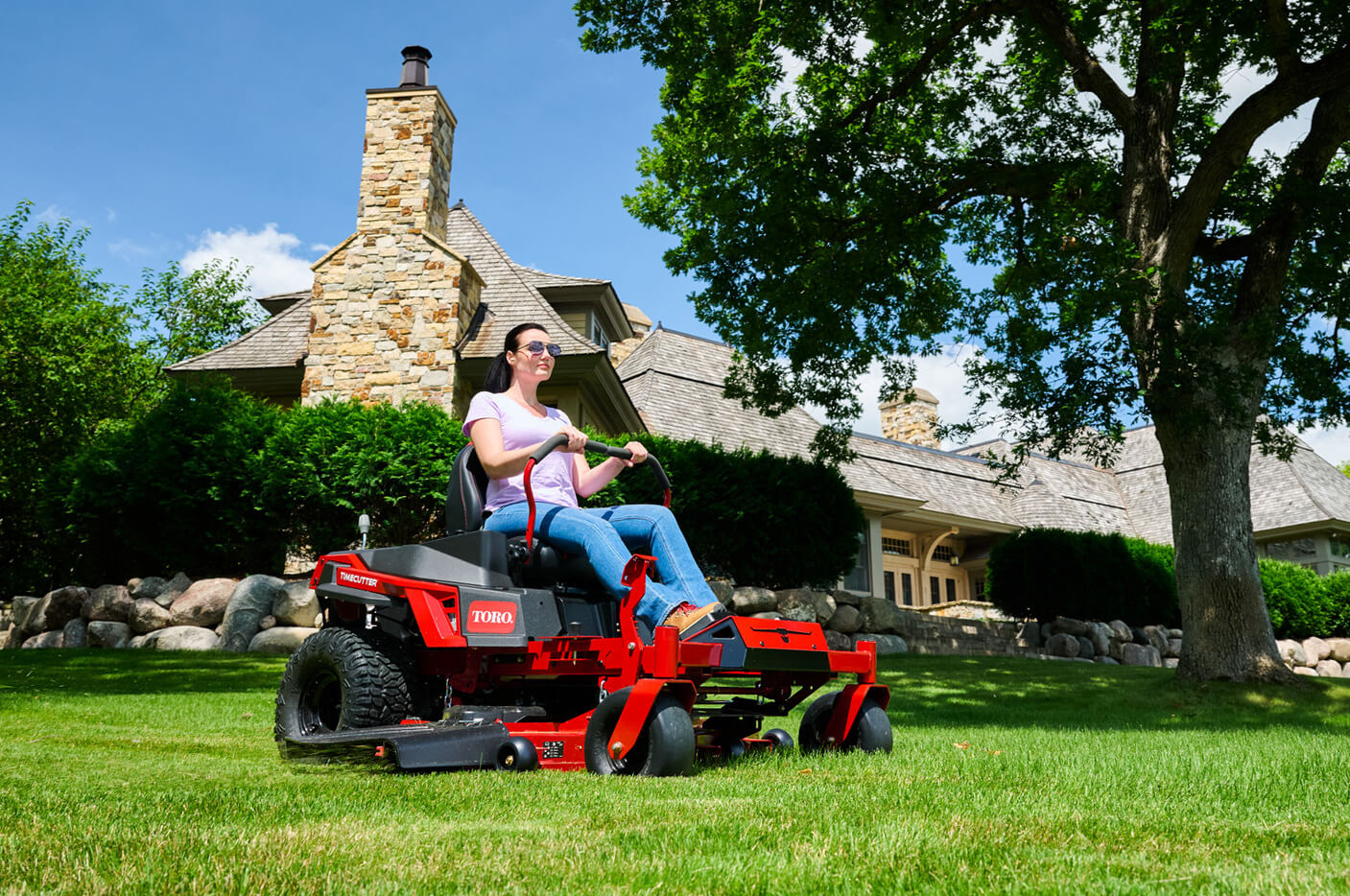
After a long, chilly winter, the warmer temperatures and sunshine of spring can be energizing – waking you and all the greenery and animals around you. Although your lawn might still show signs of wilting and dryness as it wakes from its winter slumber, there are things you can start doing almost immediately to clean it up and get a proactive start on spring lawn maintenance.
When Should I Start Preparing My Lawn for Spring?
Timing matters when prepping your lawn for spring. While it may seem beneficial to get out as soon as the weather begins to warm up, a little patience can go a long way to maximize the results of your work. The best time to begin lawn prep for spring is when your lawn has mostly greened up. Too much foot traffic on the lawn before it’s green and actively growing can compact the soil and increase the chances of killing off new grass shoots before they mature. It might seem odd, but one of the best steps of lawn prep for spring is to let it grow unbothered for a bit!
Turf Type Matters
Understanding whether you’ve got cool-season grasses (such as Kentucky bluegrass, fescue and rye) or warm-season grasses (such as Bermuda, St. Augustine and zoysia) is important to know which maintenance tasks you’ll need to perform, and when it’s best to perform them. Understanding which grasses are covering your outdoor space should be included in your spring lawn care checklist.
- Cool-Season Grasses: Cool-season grasses have two primary growth periods: one in the spring and another in the fall. They can struggle and go dormant in the heat of the summer, so spring maintenance should focus on strengthening the lawn to better deal with the summer heat.
- Warm-Season Grasses: Warm-season turfgrasses begin growing shortly after the final spring frost and hit their full growth stride as the midsummer heat cranks up.
How To Prep Your Lawn For Spring
When thinking of your spring lawn care checklist, there are a few steps to consider. Below are some spring lawn care maintenance items you can perform to help your lawn be more beautiful and weed-free this season, with notes on timing for warm and cool-season grasses.
- Yard Raking and Cleanup: Most lawns require some debris cleanup first thing in the spring. Raking up leaves and other organic materials helps ensure your lawn is getting the sunlight it needs to green up quickly. As you rake, make sure you are being gentle so as not to damage the turf by using a leaf rake and not a hard garden rake. Make note of any areas of the lawn that may be compacted (and need to be aerated) or have excessive thatch (and need to be dethatched).
- Fertilization: You won’t necessarily need to fertilize your lawn in the spring, particularly if you applied fertilizer last fall. But depending on what type of fertilizer program you’re on, part of spring lawn prep can be a good time to have your soil tested to check available nutrient levels. Cool-season grasses can benefit from a light fertilizer application in spring, once the grass is actively growing. Note that some pre-emergent weed control also includes a fertilizer, so you do not want to over-fertilize. For warm-season grasses, it’s best to fertilize in late spring as soon as the lawn greens up and is actively growing.
- Weed Control: To ensure you have a beautiful lawn all season long, apply weed control as needed as soon as the soil temperature reaches 55 degrees consistently. Often, your local extension office can help you understand the soil temperatures for your area. If you plan to perform any seeding to your lawn prep for spring, you will want to choose your herbicide carefully, as most will prevent the germination of grass seed.
- Seeding: In order to properly prep your lawn for spring seeding, make sure the ground temperature rises above 50 degrees so the seeds will properly germinate. Fall is a better time to plant cool-season grasses, so your focus for spring lawn prep planting should ideally be on filling in bare spots. Warm-season grasses should be planted when soil temperatures are consistently in the 60s and all threat of frost has passed.
Summary: How to Prep Your Lawn For Spring
You may find that if your lawn went into the winter in a well-maintained condition, it may not need all of these steps to be ready for spring. Some spring lawn prep and maintenance can be performed in the Fall, such as aeration or dethatching. Part of how to prep a lawn for spring might mean you have to do a second application, but it all depends on the condition of your lawn coming out of winter. However, consistent care and maintenance of your lawn during every season will allow your lawn to be the best looking on the block coming into those wonderfully warm months.



